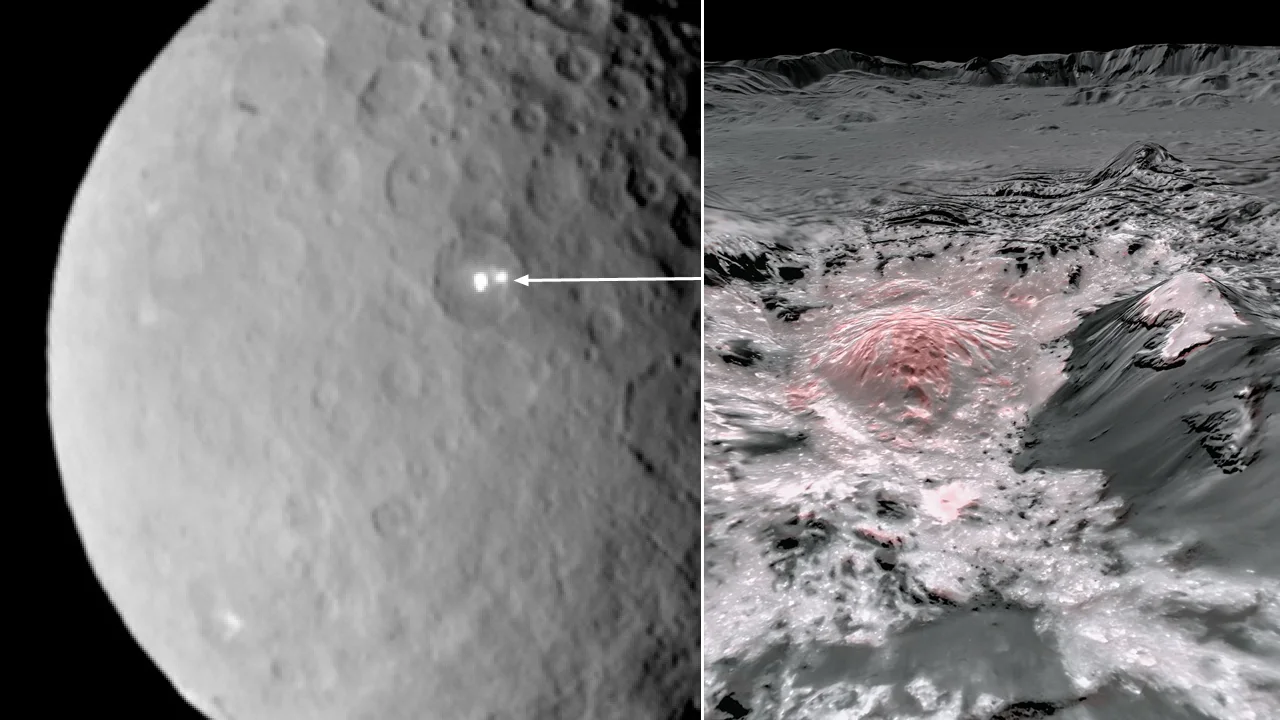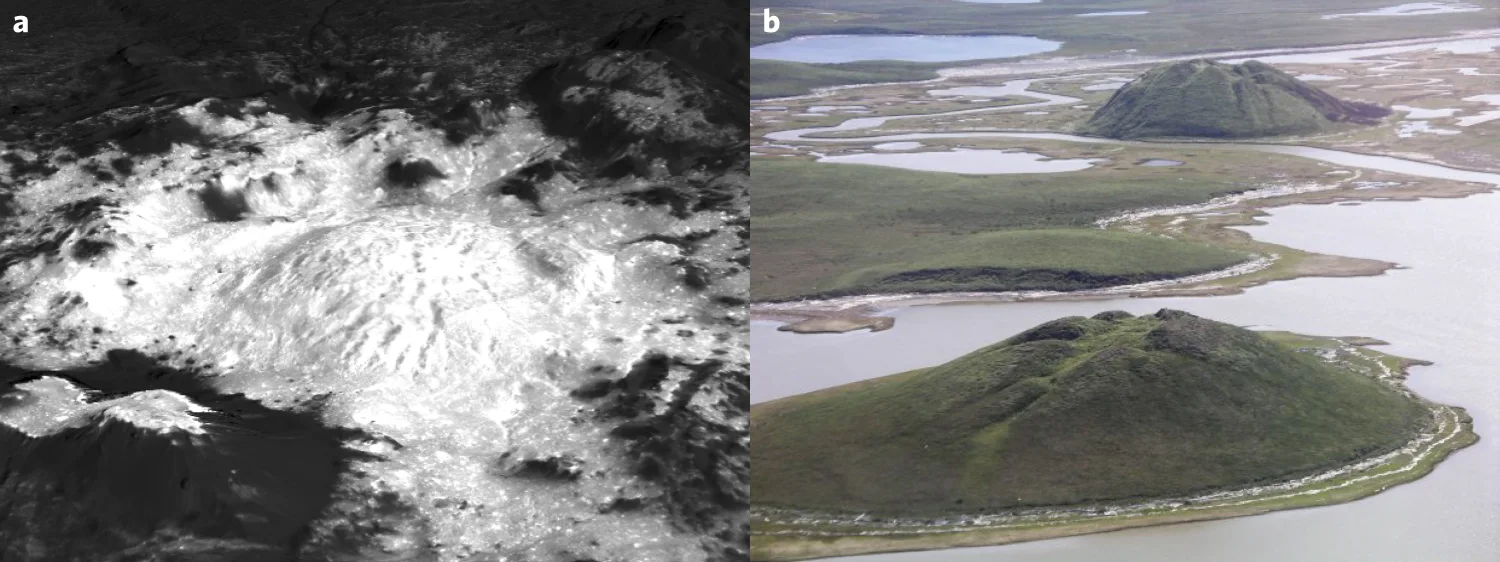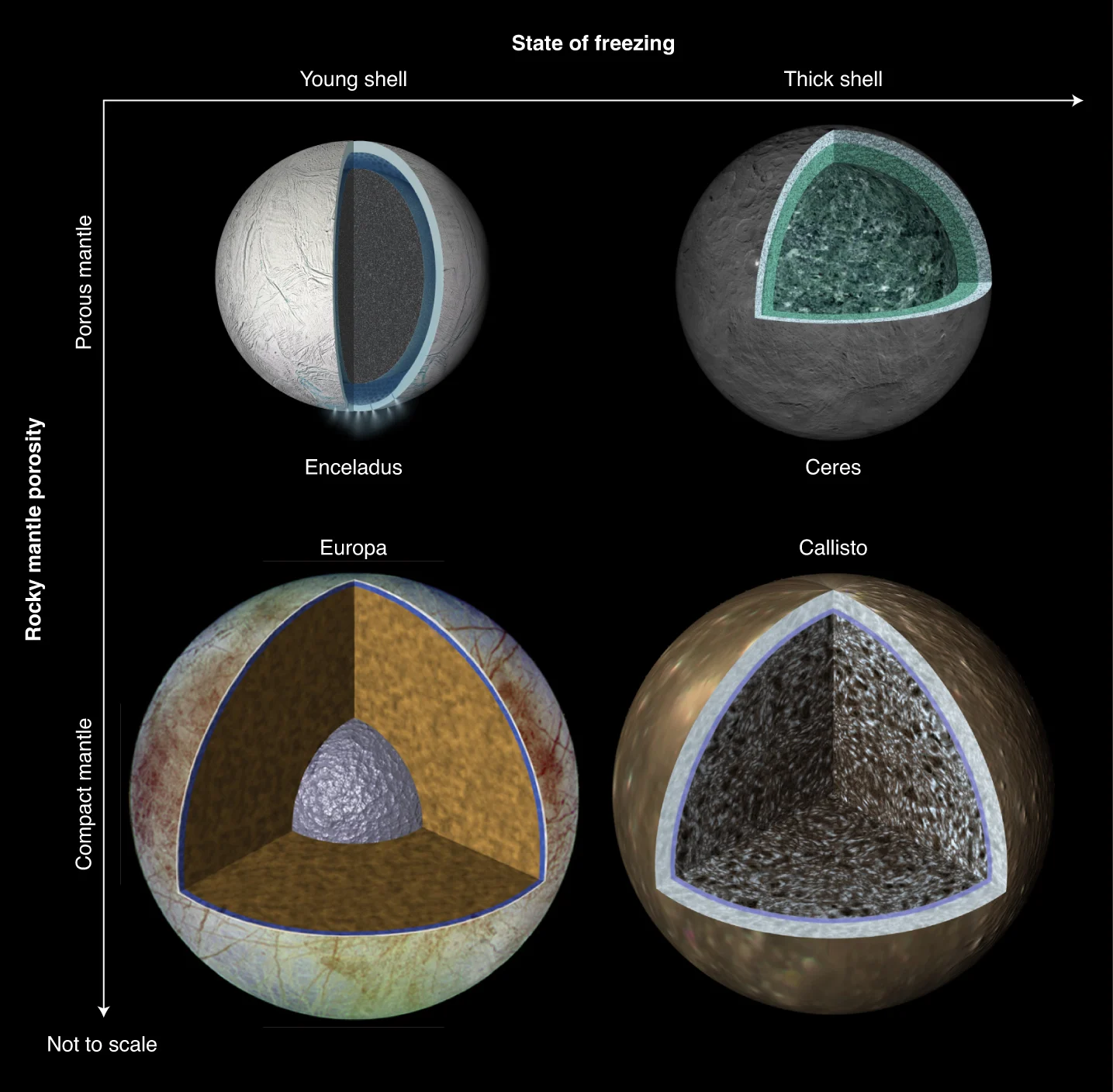
NASA has found the source of Ceres' mysterious bright spots
The largest asteroid in the solar system is a water-rich world!
Nearly two years after NASA's Dawn mission ended, scientists have used the spacecraft's final observations to uncover the mysterious source of Ceres' bright spots.
Observations of Ceres from telescopes, and from the Dawn spacecraft as it approached, revealed one part of the dwarf planet that was much brighter than the rest. As the probe's cameras captured closer and closer images, this spot was discovered to be inside the basin of an immense impact crater, which came to be known as Occator.

This image taken by NASA's Dawn spacecraft on Feb. 19, 2015, shows strange bright spots on the dwarf planet Ceres. Credit: NASA/JPL-Caltech/UCLA/MPS/DLR/IDA
As Dawn flew closer and closer to Ceres' icy surface during the different phases of its mission, the mystery of where these bright patches came from persisted. Data sent back by the spacecraft's instruments showed that these bright areas were composed of salt crystals. At the same time, however, there was no telling how or when they'd been deposited.
The crater itself was formed millions of years ago by a massive impact. Had the salts been there since then, or were they laid down much more recently, by some unseen, still-active, source?

This high-contrast overhead view of the basin of Occator crater shows the details of the bright salt deposits, named Cerealia Facula (centre) and Vinalia Faculae (right). Credit: NASA/JPL-Caltech/UCLA/MPS/DLR/IDA/PSI
It was Dawn's final passes over the surface, just before the mission ended in 2018, that provided scientists with the clues they needed to solve this mystery.
Flying just 35 kilometres above Occator crater during its closest passes over Ceres of the entire mission, Dawn sent back a flurry of data for scientists to pore over. A closer analysis of the salt deposits showed that some of the bright deposits were quite old, having been laid down millions of years ago. However, on the central mound of Occator crater, Cerealia Facula, some salt compounds were found to still contain water!
Since Ceres' has only a very thin atmosphere, any water on the dwarf planet's surface will quickly evaporate into the vacuum of space. According to NASA, salt compounds containing water only take a few hundred years to completely dehydrate. Finding water meant that some of the salt deposits hadn't been on the surface for very long.

A closeup image of Cerealia Facula (left) appears very similar to the intrapermafrost ice-cored hills known as pingos, which can be found in Canada's north. Split Pingo and Ibyuk Pingo (right) are located near Tuktoyaktuk, Northwest Territories. Credit: Nature/Schmidt, et al
For there to be recent salt deposits on Ceres' surface, there must be some local source providing a regular, or possibly continual, supply of salty water to the surface. This source was discovered by examining the detailed measurements of Ceres' gravity recorded by Dawn during these close passes. These measurements effectively allow scientists to map the interior of Ceres. It can be used to tell the depth of the dwarf planet's icy crust. It can even pinpoint the location of cavities or indicate the presence of subsurface water.
Dawn's measurements revealed that directly under Cerealia Facula, there is a roughly 20 kilometre-wide 'melt chamber' that formed during the impact that created Occator crater. Beneath that, about 40 kilometres down, there is a vast reservoir of briny liquid water.

This illustration shows a cross-section of Occator crater, highlighting the different features on the surface, the fractures that would be expected in such an impact feature, and the deep brine reservoir that lies under the crater. Credit: Nature/Scully, et al.
According to the researchers, this long-lived reservoir would have already been there at the time of the impact. In fact, they say that this brine reservoir could actually be a global subsurface ocean.
"For the large deposit at Cerealia Facula, the bulk of the salts were supplied from a slushy area just beneath the surface that was melted by the heat of the impact that formed the crater about 20 million years ago," Carol Raymond, the Dawn Principal Investigator at the Jet Propulsion Laboratory, said in a NASA press release. "The impact heat subsided after a few million years; however, the impact also created large fractures that could reach the deep, long-lived reservoir, allowing brine to continue percolating to the surface."
There's no telling how thick Ceres' subsurface ocean actually is. The data collected by Dawn can only sense down to a total depth of 100 kilometres. The ice crust is 40 around kilometres thick, and the briny layer appears to extend beyond the 100-kilometre limit.
For other icy bodies in the solar system with subsurface oceans, such as Europa and Enceladus, the giant planet they orbit provides an internal source of heat - tidal squeezing - that keeps those oceans liquid. Ceres doesn't have such a source, so it needs a different way of keeping its subsurface ocean from freezing solid.

The interior structure of Ceres is compared with Enceladus, Europa and Callisto. Credit: NASA/JPL-Caltech/UCLA/MPS/DLR/IDA
Partly, it's the composition. It's harder to freeze salty water than fresh water, and the more salt there is, the lower the temperature has to dip to turn that water into ice. It's also a matter of exposure. As Ceres cooled, the outer layer of its surface water would have frozen first, insulating the interior from direct exposure to space. For the rest, it is likely pressure. Once the dense ice crust formed, all that weight crushing down from above compresses the water, lowering its freezing temperature even further. A similar briny water source under the south pole of Mars exists due to these same reasons.
With this direct confirmation of a subsurface ocean under Ceres' crust, the dwarf planet not only joins a list of other solar system water worlds; it also could be considered a candidate for finding alien life. Organic materials have already been found on the surface. Dawn was prevented from crashing on Ceres' surface, due to NASA's planetary protection that prohibit contaminating celestial bodies with Earth microbes. So, if we believe Europa and Enceladus to be good candidates for hosting life, Ceres should join them.
Sources: NASA | Nature Geosciences/Schmidt, et al. | Nature Communications/Scully, et al.











